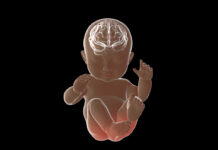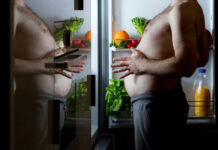
Despite drinking plenty of water, millions of Americans remain dehydrated due to factors like poor absorption, excessive diuretic consumption, and mineral imbalances that prevent proper hydration.
At a Glance
- Approximately 60% of the human body is water, making proper hydration essential for cellular, organ, and tissue function
- Dehydration occurs when fluid loss exceeds intake, causing imbalances in electrolytes like sodium, potassium, and magnesium
- Common signs of dehydration include muscle cramping, fatigue, dizziness, confusion, and increased heart rate
- Simply drinking more water may not solve dehydration issues if you’re losing essential minerals or consuming diuretics
- Effective hydration strategies include consuming electrolyte-rich beverages, eating water-rich foods, and timing fluid intake
Why Water Alone May Not Be Enough
Many people are puzzled when they drink the recommended eight glasses of water daily yet still experience symptoms of dehydration. The issue often extends beyond water quantity to how effectively your body utilizes that water. Electrolytes—minerals including sodium, potassium, and magnesium—are critical for fluid balance and cellular function. Without adequate levels of these minerals, water cannot be properly absorbed and utilized by your cells, leaving you dehydrated despite conscientious water consumption.
Diuretics like caffeine and alcohol also contribute significantly to dehydration by increasing urine output and flushing electrolytes from your system. Many adults unknowingly sabotage their hydration efforts by consuming multiple cups of coffee throughout the day or enjoying alcoholic beverages in the evening. The kidneys, which play a vital role in regulating fluid balance, can become overwhelmed when trying to process these substances while maintaining proper hydration levels.
Recognizing Dehydration Despite Regular Water Intake
Persistent dehydration manifests through several telltale symptoms that shouldn’t be ignored. Dark yellow urine, dry mouth, headaches, and fatigue are early warning signs that your hydration strategy needs adjustment. More severe dehydration can lead to muscle cramping, dizziness, and confusion. For adults over 40, these symptoms may be mistakenly attributed to aging or other health conditions, when dehydration is actually the culprit.
Pay particular attention to your hydration status during hot weather, illness, or increased physical activity. These conditions accelerate fluid loss through sweat and respiration. According to medical experts, dehydration can lead to serious health complications including kidney failure, heat stroke, and seizures if left untreated. Older adults are particularly vulnerable as the body’s water content naturally decreases with age, and thirst perception often becomes less acute.
Effective Strategies to Overcome Persistent Dehydration
Optimizing your hydration requires a multifaceted approach beyond simply increasing water intake. Start by incorporating electrolyte-rich beverages into your daily routine. Sports drinks can be beneficial but choose varieties with lower sugar content or make your own electrolyte solution by adding a pinch of sea salt and a squeeze of lemon to water. These additions help your body retain and utilize the water you consume.
Consuming water-rich foods provides a significant hydration boost. Fruits and vegetables like cucumbers, watermelon, oranges, and strawberries contain high water content plus natural electrolytes and fiber that slow digestion, allowing for better fluid absorption. Timing your water consumption throughout the day rather than gulping large amounts at once also improves absorption. Aim to drink a glass of water upon waking, before each meal, and about an hour before bedtime.
Innovative Solutions for Chronic Dehydration
For those struggling with persistent dehydration despite these strategies, newer solutions are emerging. Innovative products like Jelly Drops—sugar-free candies made of 95% water with added electrolytes and vitamins—provide an alternative method of hydration, particularly beneficial for older adults who may resist drinking fluids. Originally designed for dementia patients, these water-rich candies offer a practical way to increase fluid intake without relying solely on beverages.
Monitoring your hydration status is crucial for determining if your strategy is working. Beyond observing urine color, consider tracking your daily fluid intake with a smartphone app or dedicated water bottle. Some individuals benefit from temporarily eliminating all diuretics for a week while increasing electrolyte-rich fluids to reset their hydration baseline. If symptoms persist despite these efforts, consult a healthcare provider to rule out medical conditions that might affect fluid balance.
Maintaining Long-Term Hydration Balance
Sustaining proper hydration requires forming habits that support your body’s fluid needs throughout different seasons and activities. Create environmental cues by keeping water visible and accessible—place water bottles at your desk, in your car, and by your bedside. For those who find plain water unpalatable, consider naturally flavored water with cucumber, berries, or herbs like mint. These additions make hydration more appealing without adding sugars or artificial ingredients.
Remember that hydration needs change with age, activity level, and health status. What worked in your 30s may be insufficient in your 50s and beyond. Be proactive about hydration before, during, and after exercise, and adjust your intake during illness or hot weather. By adopting these comprehensive strategies, you can overcome persistent dehydration and support your body’s optimal functioning, regardless of age or activity level.


















